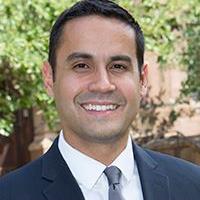Commentary on Acts 10:34-43
Acts 10 narrates a significant change in Peter’s own life but also a massive shift in the trajectory of the church’s mission in its earliest days.
For Luke, this moment is significant well beyond Peter’s life. This story is a powerful symbol of a promise enunciated from the beginning of Luke’s gospel and throughout Acts, a promise represented most powerfully in the resurrection of Jesus. Without question, God’s spirit is moving. The only question is whether Peter, as well as the church, will sense the winds of change and follow God’s lead.
Peter’s speech emerges in the midst of the rather long narrative around the encounter between Peter and Cornelius the centurion. Twin visions granted to Cornelius and Peter reveal the not-so-subtle hand of God moving to bring these two individuals together and thus precipitating a critical moment of decision. Typically, we assume that it is Cornelius who is brought to that moment of decision. After all, isn’t Cornelius the convert in this story? Perhaps not.
At the core of this encounter is the presence of social boundaries that prevented Peter from “associat[ing] with or . . . visit[ing] a Gentile” (Acts 10:28). The vision of unclean and clean animals begins to persuade Peter otherwise (Acts 10:9-16), but the narrative suggests that Peter remains cautious until the very end of this critical encounter.
Though Peter finally comes to this insight in the dramatic story of Cornelius and his household, Luke has long been heralding this inclusive impulse. After all, Jesus’ commission in Acts 1:8 declares that geographical bounds would not constrain the gospel. Peter himself proclaims anew the prophecy of Joel that the Spirit would dawn upon “all flesh” (Acts 2:17). An Ethiopian eunuch has already received baptism (Acts 8:26-40). Even more, these promises began with the opening of Luke’s gospel. Simeon declares that Jesus would be both “a light of revelation to the Gentiles and for glory to your people Israel” (Luke 2:32). Jesus’ first sermon ends rather inauspiciously when he reminds his neighbors that Elijah shared the goodness of God beyond the bounds of Israel. In other words, the Spirit long preceded Peter’s realization. Peter only came to realize the radical scope of this movement well after the Spirit had begun working.
Peter’s speech starts with a formal opening (“Peter opened his mouth and said”) that marks its solemnity and seriousness. Luke thus portrays this as a monumental speech. His thesis is a brief but powerful theological insight: “I truly understand that God shows no partiality” (cf. Romans 2:11). No matter our place of origin, the same God reaches out to us; the same gospel calls us home. Social boundaries and ethnic differences are no obstacle to the gospel. Such differences are not an irritant in need of remediation or a problem for God’s church.
In the eyes of God, all of us in our wonderful particularity equally receive the invitation to “fear” and receive God (Acts 10:35). Fear is not often a way to relate to God that we stress in our churches, especially in a culture wherein fear leads us to isolate and protect ourselves from any encroachment. The fear of God differs from the fears that can so easily immobilize us.
In Luke and Acts, fear is often associated with the appearances of angels (Luke 1:12-13; 1:30; 2:9-10; 5:10; etc.); the natural human reaction is to quiver before such appearances, but rather consistently these messengers of God instruct those to whom they appear not to fear. That is, the fear of God is not terror or panic, but a profound acknowledgement that God’s holiness, power, and love are simply beyond our comprehension. It is such fear linked with doing “what is right” which marks off the people of God (Acts 10:35).
In the next few verses (36-43), Peter proclaims the gospel in short form. In theologically dense and significant language, Peter summarizes the whole of the Christian message in a story about God’s action through Jesus, culminating in his resurrection and its proclamation by those who now bear witness to it. Notice what highlights Peter stresses. The exclamatory “He is Lord of all” encapsulates Peter’s declaration. The story of Jesus begins in Galilee and Judea. There, Jesus gains the sanction and power of the Spirit to do good and heal those over whom demons exerted power. His life seems to end on a “tree” (cf. Acts 5:30 and Deuteronomy 21:22-23), but his resurrection and his appearances to select witnesses demonstrate the futility of his execution. His resurrection then results in the command that his witnesses proclaim that he alone is “judge of the living and the dead,” and that the prophetic word has come true in the one who can forgive the sins of all who believe.
At least at this particular moment, this is the essence of the gospel for Peter: the local efforts of Jesus to heal amongst his neighbors take on a universal significance with his resurrection. In this way, Jesus shatters the distinction between the local and the universal, the provincial and the all-encompassing.
Were we to compress our faith, what theological elements would remain as most essential? Were we to tell a simple story of Jesus’ deeds and his person, what would we say?
Of course, our answers may depend on the context of our confession of faith. Peter’s gospel epitome emerges from a specific series of experiences rife with significance. From the three-fold vision (Acts 10:9-16) to the miraculous outpouring of the Spirit, Peter must express the gospel in a world radically changed before his eyes. This sounds familiar to those of us who have had to grapple with change, whether tragic or wonderful. Whether as an effect of loss or gain, our lives change, and the gospel must respond. This text reminds us that in the midst of change, the Christian’s instinct ought to be to restate anew the living word of God.
No liturgical date is as apt a reminder of this Christian imperative as Easter Sunday. Jesus’ resurrection violates the natural order of life and death, contradicts expectations that the Messiah would bring a swift end to the political powers, and continually challenges us to examine our faith anew. For Peter, the implications of the resurrection include the shattering of ossified social boundaries, for “he is Lord of all!”
Often, the wider narrative within which we find this brief but powerful speech is labeled as the conversion of Cornelius. Beverly Gaventa has argued persuasively that the typical indications of conversion are absent in this story; in fact, we even mislabel this narrative if we center it around the actions of Cornelius or Peter.1 Conversion requires the selection of a new path in life. In the end, Cornelius’ life does not change as dramatically as Peter’s and by implication, the church’s. In the end, God is the ultimate actor. God has moved ahead of the church to embrace all the world’s people. Indeed it is God’s initiative that sets Peter, Cornelius, and the church to this monumental juncture.
Peter and the church are only playing catch-up at this point in the narrative of Acts. In fact, Peter “was still speaking when the Holy Spirit fell upon all who heard the word” (Acts 10:44). Those who were circumcised were amazed, and Peter finally fully understands the gravity of his speech’s implications. “God shows no partiality,” means that no one ought to “withhold the water for baptizing these people who have received the Holy Spirit just as we have” (Acts 10:47, italics added).
On the day when we celebrate the resurrection of Christ, it may therefore be particularly appropriate for the church to consider how the Spirit may be moving amongst us in unexpected and challenging ways and to ask how the reverberations of the resurrection continue to be manifest around us.
1Beverly Gaventa, The Acts of the Apostles (ANTC; Nashville: Abingdon Press, 2003), 173-5.


April 4, 2010